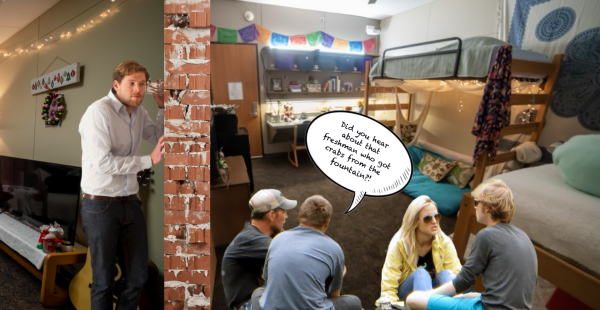Trinity needs to invest, not divest
A case for solar energy
In a student’s time at Trinity University, one thing they are sure to find is a group of students or a whiteboard in the Coates Student Center calling for the university to divest. However, in all of my encounters with the divestment movement on campus, I feel they have focused on the wrong argument for our campus. The focus should instead be on investment and its feasibility.
Firstly, what is divestment? On campus, divestment means the university would transfer investment from the oil and natural gas industries to renewable energy sources like wind and solar. This transition from fossil fuels would also include not taking money or donations from these industries and not relying on them for energy. However, this will likely never happen, especially for a school constantly looking at new construction. There is simply too much money involved to ignore. This is not a disadvantage though and should be used to Trinity’s advantage.
When I think of the university becoming less reliant on fossil fuels for energy, I do not think of refusing to take their money, but instead using the funds provided to consider solar on campus. Although a public district, I think back to what my old school district did. In California, energy is very expensive and the open-air schools get very hot for half of the school year, so they devised a plan to kill two birds with one stone. Saddleback Valley Unified School District installed solar panels across campuses to provide shade to parking lots and strategic areas. The plan was costly, but ultimately both students and the district enjoyed it. It saved the district money in the long run and made campus a little bit cooler.
Something similar could be done at Trinity. If the university is going to be progressive, then it needs conservatives to ensure it is being progressive for the right reasons. Installing solar panels over the student and Alamo Stadium parking lots would provide plenty of energy to the school and provide students with cooler and safer locations to park their vehicles. At Trinity, peak energy consumption will be at the same time as peak energy production, so the university will not need expensive, top-of-the-line batteries and can rely on the Texas power grid for evening to morning hours. Although it will not guarantee that solar will be financially feasible on Trinity, it will make solar cheaper than it otherwise would be.
In reality, Trinity can not be 100% reliant on solar power, and neither could my old high school, even though they get roughly 30% more sunny days a year than Trinity (283 vs. 220).
In other words, the future of Trinity University, and the energy industry as a whole, needs to focus on making investments, not divestments.

I'm a senior Computer Science major and a Classical Studies minor from Newton, North Carolina with a passion for art. I also work at the Center for Experiential...











Aryt Alasti • Feb 14, 2022 at 11:31 am
Trinity most certainly could obtain all of its energy and fuel need from renewable sources. Even Harvard is aiming to do that. Many colleges and universities have “green revolving funds” which have contributed to solar installations and energy-efficiency building upgrades, with the resulting savings paying for borrowings. Alumni could also be asked to contribute to funds for such purposes. The author doesn’t understand what the model of change involved with divestment is. Although for long-term investors, fossil fuels are certain to be a losing proposition if nations and sub-national governments of the world follow through with their catastrophe-aversion climate pledges, and to some extent divestment deprives this profoundly damaging industry of funding for pursuit of more extraction capacities, the primary focus of global and local campaigns has always been that of additionally stigmatizing these companies’ practices, so as to build the political will necessary for transformative governmental actions. By now there are trillions of dollars’ worth of assets with associated divestment commitments, and the positive impacts of those decisions (as well as the educational benefits of countless activist campaigns) have been phenomenal.